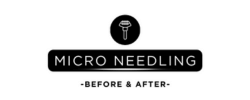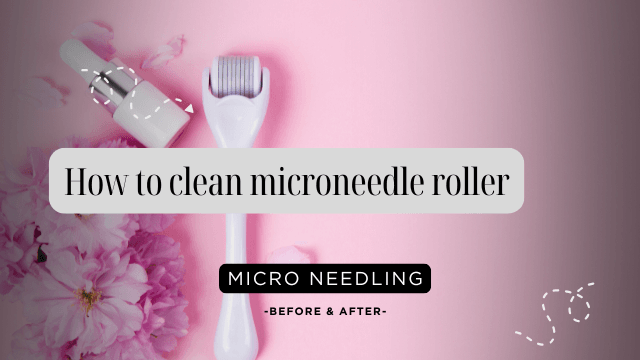As someone who’s incorporated a microneedle roller into my skincare routine, I can’t emphasize enough how important it is to keep this tool clean. A few years ago, I started using a microneedle roller to help with some acne scarring, and I quickly learned that proper cleaning is just as important as the treatment itself. Today, I want to share my thorough cleaning routine to ensure you get the most out of your dermarolling sessions while staying safe.
Why Cleaning Your Microneedle Roller Is Non-Negotiable
Before diving into the cleaning process, let me explain why this is so crucial. Your microneedle roller creates tiny punctures in your skin—that’s how it works its magic! However, these micro-injuries can become entry points for bacteria if your roller isn’t properly sanitized. The last thing you want is to introduce infections while trying to improve your skin.
I once skipped thorough cleaning between sessions (I was tired, it happens!), and I ended up with irritation and small bumps. Lesson learned: never compromise on cleaning your microneedle roller.
What You’ll Need to Clean Your Microneedle Roller
I’ve tried various cleaning methods over the years, and I’ve settled on these essential supplies:
- 70% isopropyl alcohol (not rubbing alcohol)
- A shallow, clean container
- Hot water
- Mild, fragrance-free soap
- Paper towels or a clean microfiber cloth
- Optional: UV sterilizer
My Step-by-Step Cleaning Process
Immediate Rinse After Use
As soon as I finish my dermarolling session, I immediately rinse my microneedle roller under hot running water. I’m careful to avoid touching the needles directly and focus on rinsing away any skin cells, product residue, or other debris that might have accumulated during use.
Soap Cleaning
Next, I fill a clean bowl with hot water and add a few drops of mild, fragrance-free soap. I gently swish the head of the microneedle roller in this solution for about 2 minutes, being mindful not to damage the delicate needles. This step helps remove oils and residue that water alone can’t tackle.
Alcohol Disinfection (The Most Important Step!)
After rinsing the soap solution off thoroughly, I move on to the most critical step: disinfection. I pour 70% isopropyl alcohol into a clean, shallow container—just enough to submerge the needle head completely. Then I soak my microneedle roller for at least 10 minutes.
I’ve found that 70% alcohol works better than higher concentrations because it evaporates more slowly, giving it more time to kill bacteria and other microorganisms.
Proper Drying and Storage
After the alcohol soak, I carefully remove the microneedle roller and place it on a clean paper towel or microfiber cloth. I never wipe the needles, as this could bend or damage them. Instead, I let it air dry completely before placing it back in its storage case.
If your microneedle roller came with a protective case, make sure that’s clean too. I occasionally wipe mine down with alcohol to keep everything sanitary.
Additional Sterilization Methods I’ve Tried
UV Sterilization
I invested in a small UV sterilizer box a year ago, and I use it as an extra step after the alcohol soak. It’s not necessary, but it gives me extra peace of mind. After the alcohol has completely evaporated, I place my microneedle roller in the UV sterilizer for the recommended time (usually 5-10 minutes).
Steam Sterilization
I’ve occasionally used steam sterilization by holding my microneedle roller (after the alcohol has dried) over boiling water for a few minutes. However, I don’t recommend this as a regular practice as the heat can potentially damage the needles over time.
When to Replace Your Microneedle Roller
No matter how well you clean your microneedle roller, it won’t last forever. I replace mine every 10-15 uses, or sooner if I notice:
- Bent or dull needles
- Rust or discoloration
- Pulling or unusual discomfort during use
Even with perfect cleaning, the needles will eventually dull, making the tool less effective and potentially more irritating to your skin.
Common Cleaning Mistakes I’ve Made (So You Don’t Have To)
- Using rubbing alcohol instead of isopropyl alcohol (they’re not the same!)
- Not allowing enough soaking time in the alcohol
- Wiping the needles directly (this can bend them)
- Storing the microneedle roller while it’s still damp
- Using cotton balls or swabs that can leave fibers on the needles
Final Thoughts
Proper cleaning of your microneedle roller isn’t just about extending its life—it’s primarily about your skin’s health and safety. The few extra minutes spent on thorough cleaning can make all the difference between achieving that gorgeous glow and dealing with unwanted infections or irritations.
Remember that a microneedle roller is a tool that creates micro-injuries to benefit your skin in the long run. Treat it with the same care and cleanliness as you would any medical device—because essentially, that’s what it is.
Do you have any questions about cleaning your microneedle roller? Or perhaps you’ve found another effective cleaning method? I’d love to hear about your experiences in the comments below!

